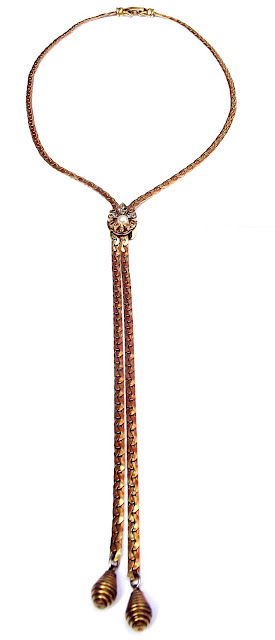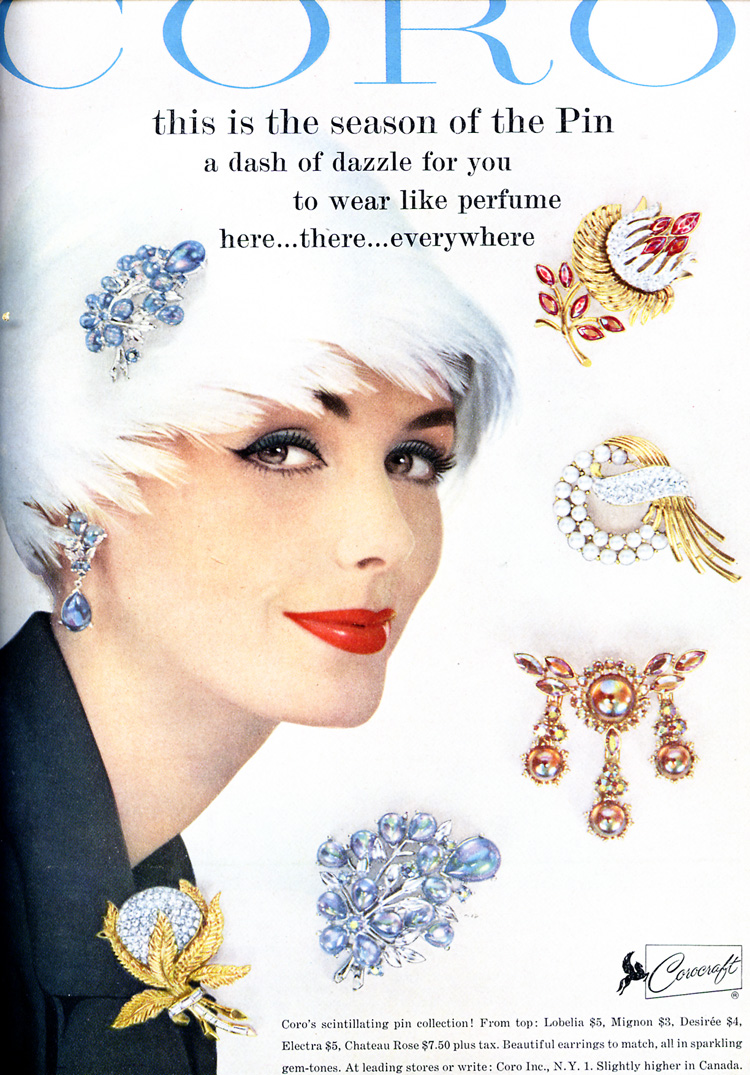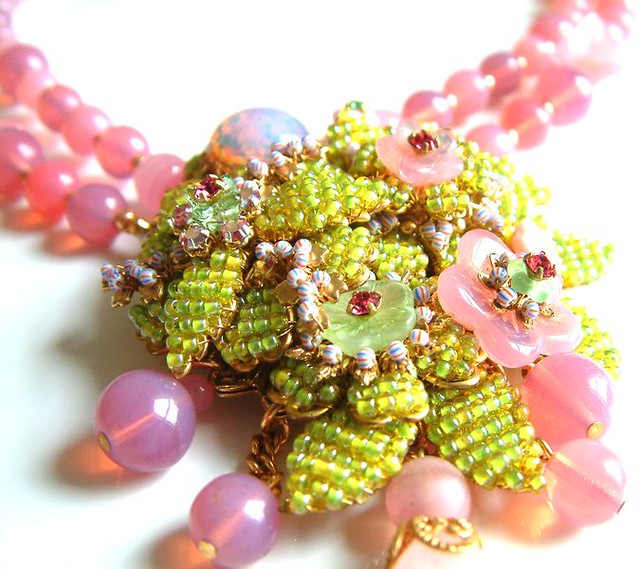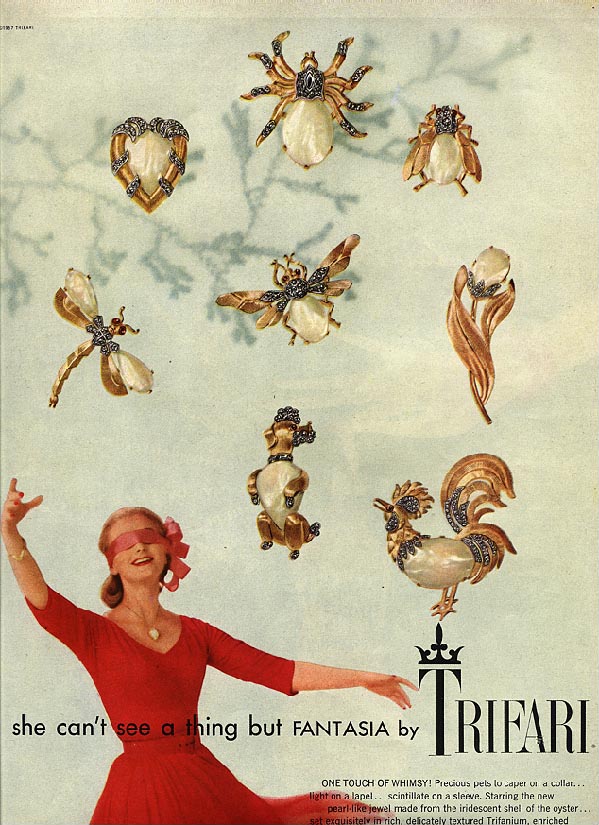Delizza and Elster designed and manufactured jewellery for
many 20th costume jewellery houses but are particularly famous for
their ‘Juliana’ line of jewellery which has become increasingly sought after by
vintage jewellery collectors today.
Founded by William Delizza Harold Elster in 1947, the company produced magnificent
pieces of jewellery and became well known for their complex three dimensional
designs, quality workmanship and use of unusual art glass stones. They designed and manufactured numerous
jewellery sets, earrings, brooches, bracelets and necklaces as well as buttons
and belts.
They had a showroom on Fifth Avenue, New York and their
jewellery was sold in many department stores throughout the US. They also produced jewellery for many other well
known companies including Kenneth Jay Lane, Tara, Sarah Coventry, Alice Caviness,
Coro, Kramer and Hattie Carnegie.
Delizza and Elster jewellery can be difficult to identify as
their pieces were unmarked but due to its popularity amongst vintage jewellery
collectors many online verification sites have become available. In
1967/68 a paper hang tag in black and gold was attached to identify Juliana
jewellery. Finding pieces with the original label attached is rare but
extremely desirable for collectors.
There are certain characteristics associated with Juliana Jewellery
that can help with its identification. Here is a brief summary
BRACELETS
- Many incorporated
a 5 link construction using round or oval shaped links
- Most have a safety
chain
- Only square
shaped wire used in clamper bracelets
- Flat backed
bracelets also produced
BROOCHES
- Built in joint and catch pin
- Multidimensional layering
- Circular rings often used for support
NECKLACES
- Styles included bib necklaces, V shaped
necklaces , collars
- Some incorporated a 5 link construction
- A J hook closure was most commonly used
EARRINGS
- Backs most commonly consist of a scalloped shape clip
with 3 holes although other types were used.
Features common to all Delizza and Elster jewellery was the use of open and
closed navette rhinestones, extravagant art glass stones and glittering aurora
borealis and diamantes. Gold and silver
toned metals were used as well as japanned (black) and gun metal effects.
The prices of Juliana jewellery has dramatically increased
over the last few years. When determining the value of a piece, market demand,
quality, condition and rarity are important factors.
For more information regarding Juliana Jewellery an
excellent resource is Katerina Musetti’s book ‘ The Art of Juliana Jewellery. The
book include a comprehensive guide to
the history, identification and
care of Juliana Jewellery along with beautiful photographs throughout.
















.JPG)






























